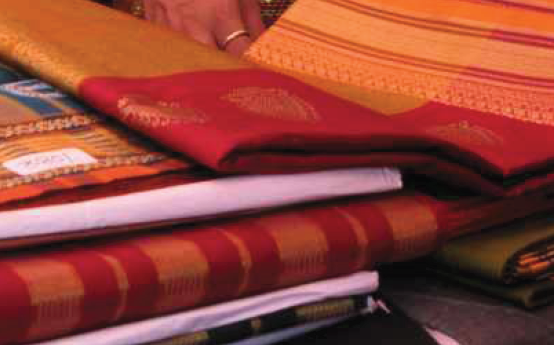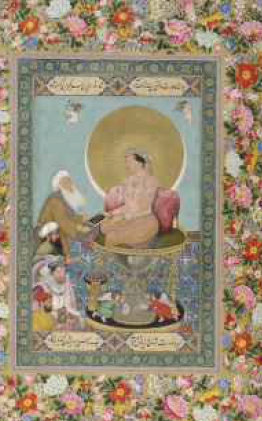Bhagalpur
This is a collection of articles archived for the excellence of their content. Readers will be able to edit existing articles and post new articles directly |
Bhagalpur
India Harmony VOLUME - 1 : ISSUE – 6 SEPTEMBER-OCTOBER, 2012
Weaving Silken strands of Harmony
Nestling on the banks of the Ganges, overlooking the harbor, is the ancient city of Bhagalpur. Tracing its roots to the times of the Mahabharata when it was known as Bhagdattpuram or city of “good luck” it grew to be one of the most important trade centers in India by the seventh century AD. The famed Chinese travelers of the time, Hsuan – Tsang and Fa Hien have written glowing accounts of its preeminence in their travelogues. These are borne out by archeological finds of a vast array of boats and coins from the middle east and the far east. Its ancient harbor on the Ganges called Champanala flows serenely on the western precincts of the city. The rare Gangetic Dolphin, now declared the National Aquatic Animal of India is found here in the Ganges Basin giving rise to the establishment of the Vikramshilla Gangetic Dolphin Sanctuary on the periphery of the town. The 800 ft high Mandara granite hill is a visual delight surrounded by a landscape of exceptional beauty. Through the ages, the hill finds mention in the Puranas, the Ramayana and the Mahabharata. Folklore and legends abound in the area and the stories are borne out by relics and inscriptions found on the hill side. Kalidasa’s epic Kumarasambhava refers to the foot marks of Lord Vishnu on the slopes of Mandara. Numerous rock cut sculptures and statues of Hindu gods can be seen to this day. The Jains too revere the hill as they believe that their twelfth Tirthankara attained nirvana at the summit of the hill. In ancient times, Bhagalpur was the part of the kingdom of Anga that was ruled by the chairtable king Karna who is mentioned in the Mahabharata. It is remarkable that the language of the kingdom, Angika, has survived and is spoken by 50 million At which point I felt I was expected to say something like “Wah! Wah!” but ended up exclaiming instead, in a voice choked with emotion, people world wide. The city is dotted by heritage sites that record the rich history of the region. A temple from the, Gupta period sill exists at Bhagalpur and the ruins of Vikramshilla university can be found a short distance east of the city. This medieval center for propagation and conservation of Buddhism was established by King Dharampala of Bengal, a great patron of Mahayana Buddhism, in the eighth century AD.
Sadly, Vikramshilla could not retain its lofty ideals and early splendor and now lies in ruins awaiting revival. At that time, Bhagalpur was an independent state but later passed on inbto the hands of Afghan rulers in the twelfth century. It came under Mughal rule when Akhbar declared it as a part of the Delhi Empire. The mausoleum of Suja, brother of emperor Aurangzeb, stands in the heart of the city, an important milestone of the region's importance during the Mughal period. The much revered Sufi dargah of Shahwaz Rehmatullah is another reminder of times when Sufism prevailed and rulers and common people visited the shrine in large numbers. Bhagalpur came under British rule in 1765 when Emperor Shah Alam II gave it away as a Grant to the East India Company. It remained an important trade post over the next 200 years and continued to prosper.
The story of Bhagalpur silk
This culturally rich port city is also known as the silk city due to it's centuries old tradition of silk weaving. It is debatable just when and how silk first came to Bhagalpur. It is widely believed that it must have come from China where it is said to have originated. However, recent studies by scientists at Harvard University, who analyzed the silk fibre excavated from the Indus Valley settlements have concluded that the technique used was different from the Chinese method of degumming and reeling. On the other hand, the ancient indian technique was to spin the silk after the moth escaped from the cocoon. This non violent means of silk production was highly valued as the purest form and found favor with temple priests and Jain monks. In recent times Mahatma Gandhi too used this method and promoted it as Ahimsa silk. The indigenous Antheraea mylitta moth was used by the Indus Valley settlements and the same is used in the present day by the weavers of Bhagalpur to produce their famous Tussah silk. It is therefore quite possible that silk production in this region predates the use of Chinese mulberry silk for weaving royal brocades by latter day Mughal monarchs. Bhagalpur's strategic location linking the Middle East to the Far East nurtured it's silk industry. The port had easy access to mulberry silk imported from China and transformed here by skilled artisans brought in from Persia and theCentral Asian Provinces of Balkh, Bukhara,Khorasan and Damascus. Legend has it that the Chinese zealously guarded the secrets of sericulture until it was smuggled out in the second century AD by a Chinese princess who was married off to a prince of Khotan in Central Asia.
She is said to have hidden the silk cocoons in her coiffure and carried them off to her new country. There was no looking back. It's popularity grew over the entire region. Timur, the conqueror, had the weavers of Damask satin sent to Samarkand and Bukhara from where they found their way to India accompanying the conquering armies. By the time Akbar came to the throne silk brocade was heavily patronized by royal families and Hindu temples. Emperor Akbar himself supervised the royal textile workshops and the intermingling of creative techniques was born of his broad vision. He brought in expert weavers from distant shores who created a fusion of Indian and Persian designs. The fabrics and designs so created were in great demand throughout the world. This creative union is still alive in the workshops of Bhagalpur where Muslim weavers continue to weave the humbleTussah which now is simply known as Bhagalpur silk. Their silent contribution to Bihar's economy is noteworthy.
Despite the vissicitudes of time they continue to live in harmony with the locals -a peace often disrupted by vicious communal attacks by outside elements attempting to decimate the centuries old tradition of silk weaving which is the very core of the city's identity. After India's independence successive governments in Bihar have encouraged the development of Bhagalpuri silk. It is indeed commendable that today the humble Tussah has carved a niche in the global fashion and interior design industries. Ironically, it's raw natural beauty is more in demand than the rich brocades of yesteryear and it's export is poised to give a significant boost to the local economy.




